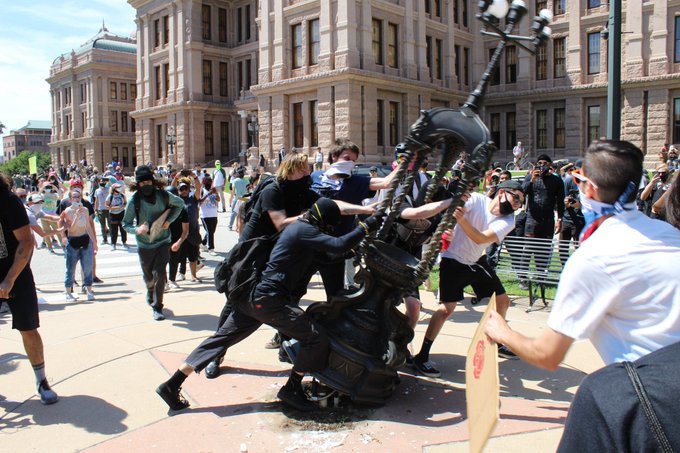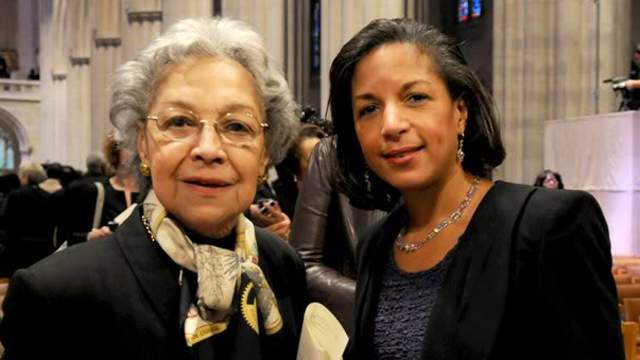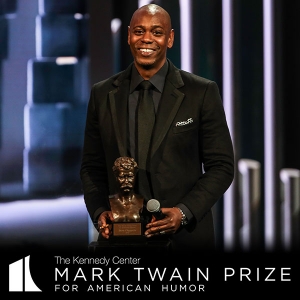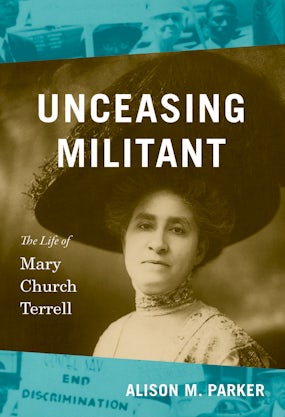We burned down entire cities, white neighborhoods that lost commerce.
How did the ability to burn down cities and white neighborhoods enrich the lives of black people? Was there a wealth transfer that I missed?
We burned down entire cities, white neighborhoods that lost commerce.
I wasn’t talking about protesting and marching. We burned down entire cities, white neighborhoods that lost commerce. You think the NYPD would have been held to account by the city council if black people in NY hadn’t wrecked shyt?



















Sometimes dubbed “the Tuskegee of the North,” the Bordentown School opened in 1886
Wow. Never heard of this school. There have been schools like this all over and all people can say is how come black leaders have not done enough in the realm of black education.
Here is a school that Umar Johnson could've bought that had an esteem history of educating the marginalized if he was really serious about education.
I posted these passages on the ethnogenesis of AfroAmerican identity in other threads but they give context to many questions posed in this thread such as:
1. Are these people black? They look like cacs
2. Did they ever look out for the people beneath them?
3. How come they're all light/where are the darker ones?
How do you obtain these book excerpts?
The excerpts about Charleston is surprising. Charleston has always been a very aristocratic city and the black elites that had ties to Charleston's white aristocratic families were known to be very colorist and rigid. Even more than DC and up there with New Orleans. So to hear that they were also the first to strike down their color barriers and integrate with the broader black population is interesting. This also explain some confusion that I had. You can generally get a sense of which towns are still on that colorism trip by looking at photos of the black elite organizations. I've made a mental note before how I was surprised to see how brown Charleston's Boule members are, after looking through some of the Boule Journals over the years, compared to, say New Orleans. This explains why.


And its striking how many of the northern cities maintained colorism while many southern cities divested from it. Like Detroit, for instance. I've said this before on here but Detroit folks are a trip. Evil, even. I remember visiting family when I was younger and they and their friends were just very insular people. I found out later how Detroit had the largest black middle class in the country at one point and some very very wealthy blacks, which I didn't know before, but it made sense.
But not just Detroit, lots of smaller midwestern towns - Columbus, Cleveland, Indianapolis, all still appear to hold on to some small vestiges of colorism, where it's just apparent.
I've been meaning to make a thread on this but do you think the reason the ADOS faction are so staunchly opposed to the idea of Pan Africanism, is because Pan Africanism was born out of bourgeoise ideas? It's origins born out of the New England black abolitionist and professional elites, with the idea of leveraging Africa as a resource to propel our interest. Pan-Africanism would then be viewed as a child of black capitalism.




an African-American harnessmaker from Oberlin, Ohio, joined John Brown's raid on Harpers Ferry, where he was killed
Leary's father was a free born African-American harnessmaker. Lewis Leary was born at Fayetteville, North Carolina. His paternal grandparents were an Irishman, Jeremiah O'Leary, who fought in the American Revolution under General Nathanael Greene, and his wife of African, European and Native American descent. His great grandfather, Aaron Revels, also fought in the revolution. Through Revels, he was a cousin to Hiram Rhodes Revels, the first African-American to serve in the United States Senate. His brother was North Carolina politician and lawyer, John S. Leary[1]
In 1857, Lewis Leary moved to Oberlin. There he married Mary Patterson, an African-American graduate of Oberlin College. Leary became involved with abolitionists in Oberlin, which had an active community. Later, he met John Brown in Cleveland, Ohio.
In 1858, Leary participated in the Oberlin-Wellington Rescue, when fugitive slave John Price was forcibly taken from the custody of a U.S. Marshal to prevent his being returned to slavery in the South. Leary was not among the 37 men (12 of them free blacks) who were indicted and jailed for their actions. As a result of negotiations between state officials (who had arrested the US Marshal and his party) and federal officials, only Simon Bushnell and Charles Henry Langston were tried; both were convicted, and served light sentences, in part because of Langston's eloquent speech in their defense.[2]
Leary may have been the first recruit from Oberlin to join Brown's army. He left Mary and their six-month-old daughter Louise at home. Accompanied by John A. Copeland, Leary went to Chambersburg, Pennsylvania, to join Brown. Leary died eight days after the attack from wounds suffered in the conflict at Harper's Ferry. Copeland was captured, tried and later executed. After Leary's death, the abolitionists James Redpath (editor for the New York Tribune) and Wendell Phillips helped raise money for Mary and Louise Leary's support and the girl's education.
In 1869 the widow Mary Patterson Leary married again, to the Ohio abolitionist Charles Henry Langston. The family moved to Lawrence, Kansas, where they remained for the rest of their lives. In 1872 Charles and Mary's daughter Caroline Mercer Langston was born. She would become the mother of the renowned poet Langston Hughes

(September 27, 1827[note 1] – January 16, 1901) was a Republican U.S. Senator, minister in the African Methodist Episcopal Church, and a college administrator. Born free in North Carolina, he later lived and worked in Ohio, where he voted before the Civil War. He became the first African American to serve in the U.S. Congress when he was appointed to the United States Senate as a Republican to represent Mississippi in 1870 and 1871 during the Reconstruction era.
During the American Civil War, Revels had helped organize two regiments of the United States Colored Troops and served as a chaplain. After serving in the Senate, Revels was appointed as the first president of Alcorn Agricultural and Mechanical College (now Alcorn State University) and served from 1871 to 1873 and 1876 to 1882. Later in his life, he served again as a minister.
Revels attended the Beech Grove Quaker Seminary, a school in Union County, Indiana founded by Quakers, and Darke County Seminary in Ohio.[3] He was a second cousin to Lewis Sheridan Leary, one of the men who was killed taking part in John Brown's raid on Harpers Ferry and to North Carolina lawyer and politician John S. Leary.


was a lawyer and politician in Fayetteville and Charlotte, North Carolina. He was one of the first black lawyers in North Carolina and was a member of the state legislature from 1868 to 1870. He was an alderman in Fayetteville and later held federal government appointments. He was the first dean of the law school at Shaw University in 1890.

was born a free black in Raleigh, North Carolina. In 1843 when he was a child, his family moved north to Oberlin, Ohio, where he later attended Oberlin College's preparatory (high school) division. He became involved in abolitionist and antislavery activities, and was a highly visible leader in the successful Oberlin-Wellington Rescue of 1858.[1] Copeland joined John Brown's raid on Harpers Ferry, was captured, convicted of murder and conspiracy to incite slaves to rebellion. He was hanged on December 16, 1859. There were 1,600 spectators.[2] His family tried but failed to recover his body, which was taken by medical students for dissection.


was the first African-American woman to receive a B.A degree, in 1862.
Mary Jane Patterson was the oldest of Henry Irving Patterson and Emeline Eliza (Taylor) Patterson's children. There is conflicting data on how many siblings she had, but most sources cite between seven and ten. Henry Patterson worked as a bricklayer and plasterer who gained his freedom, after Mary was born, in 1852. After this, he moved his family north to Ohio. The Pattersons settled in Oberlin, Ohio, in 1856. Oberlin had a large community of black families; some were freed slaves and some were fugitive slaves. Oberlin was popular because it had a racially integrated co-ed college. Henry Patterson worked as a master mason, and for many years the family boarded large numbers of black students in their home.

was an American abolitionist and political activist who was active in Ohio and later in Kansas, during and after the American Civil War, where he worked for black suffrage and other civil rights. He was a spokesman for blacks of Kansas and "the West".[1]
Born free in Louisa County, Virginia, he was the son of a wealthy white planter and his common-law wife of African American-Pamunkey ancestry, whom his father freed. His father provided for his sons' education and ensured Langston and his brothers inherited his estate. In 1835 Langston and his older brother Gideon were the first African Americans to attend Oberlin College in Ohio.
Langston worked for 30 years for equal rights, suffrage and education in Ohio and Kansas. In 1858, Langston was tried with a white colleague for the Oberlin-Wellington Rescue, a cause célèbre that was a catalyst for increasing support for abolition. That year Langston helped found the Ohio Anti-Slavery Society and, with his younger brother John as president, led it as executive secretary. After the American Civil War, he was appointed as general superintendent of refugees and freedmen for the Freedmen's Bureau in Kansas. In 1872 he was appointed as principal of the Quindaro Freedman's School (later Western University), the first black college west of the Mississippi River.
He was an older brother of John Mercer Langston, an accomplished attorney and activist, who had numerous appointed posts, and in 1888 was the first black person elected to the United States Congress from Virginia (and the last for nearly a century).
The Oberlin–Wellington Rescue of 1858 in was a key event in the history of abolitionism in the United States. A cause celèbre and widely publicized, thanks in part to the new telegraph, it is one of the series of events leading up to Civil War.
John Price, an escaped slave, was arrested in Oberlin, Ohio, under the Fugitive Slave Law of 1850. To avoid conflict with locals, whose abolitionism was well known, the U.S. marshal and his party took him to the first train stop out of Oberlin heading south: Wellington. Rescuers from Oberlin followed them to Wellington, took Price by force from the marshal and escorted him back to Oberlin, from where he headed via the Underground Railroad to freedom in Canada.
Thirty-seven rescuers were indicted, but as a result of state and federal negotiations, only two were tried in federal court. The case received national attention, and defendants argued eloquently against the law. When rescue allies went to the 1859 Ohio Republican convention, they added a repeal of the Fugitive Slave Law to the party platform. The rescue and continued activism of its participants kept the issue of slavery as part of the national discussion.
Aftermath
In time, regional tensions over slavery, constitutional interpretation, and other factors led to the outbreak of the Civil War. The Oberlin-Wellington rescue is considered important as it not only attracted widespread national attention but occurred in a region of Ohio known for its Underground Railroad activity. Those who participated in the rescue and their allies continued to be active in Ohio and national politics. In 1859 those who attended the Ohio Republican convention succeeded in adding a repeal of the Fugitive Slave Law of 1850 to the Ohio party platform. The rescue and continued actions of its participants brought the issue of slavery into national discussion.[1]
Two participants in the Oberlin–Wellington Rescue—Lewis Sheridan Leary and John A. Copeland, along with Oberlin resident Shields Green—went on to join John Brown's Raid on Harper's Ferry in 1859. Leary was killed during the attack. Copeland and Green were captured and tried along with John Brown. They were convicted of treason and executed on December 16, 1859, two weeks after Brown.

was an American abolitionist, attorney, educator, activist, diplomat, and politician. An African American, he became the first dean of the law school at Howard University and helped create the department. He was the first president of what is now Virginia State University, an historically black college.
Born free in Virginia to a freedwoman of mixed race and a white planter father, in 1888 Langston was elected to the U.S. Congress as the first representative of color from Virginia. Joseph Hayne Rainey, the black Republican congressman from South Carolina, had been elected in 1870 during the Reconstruction era.
In the Jim Crow era of the later nineteenth century, Langston was one of five African Americans elected to Congress from the South before the former Confederate states passed constitutions and electoral rules from 1890 to 1908 that essentially disenfranchised blacks, excluding them from politics. After that, no African Americans would be elected from the South until 1973, after the federal Voting Rights Act of 1965 was passed to enforce their constitutional franchise rights.
Langston's early career was based in Ohio where, with his older brother Charles Henry Langston, he began his lifelong work for African-American freedom, education, equal rights and suffrage. In 1855 he was one of the first African Americans in the United States elected to public office when elected as a town clerk in Ohio






“To me, it is so significant to note that here you have these seven black men who take matters into their own hands, not just for their project, but the future of coloreds — as the term was used in that time,” said Bertha Miller, the university’s historian.
The deed the founders signed was registered on Nov. 29, 1867, which is now recognized as the official date of the beginning of Fayetteville State University. The Howard School would open two years later, described in its day as “a large commodious building” erected at a cost of $3,800. There, the students — a total of 302 in first- through eighth grades that first term — were taught their ABCs, how to read and how to write.
The Fayetteville community would set a precedent in the founding of the school. Rather than as an initiative coming down from Northern philanthropy or a religious organization, the Howard School represented the foresight of a black community to provide education for its children, Miller said. With three upstairs rooms, it stood in contrast to the one-room state schools built for whites and for blacks during that era in the South.
The Howard School evolved into the state’s first school for black teachers. Nearly a century later, it became part of the University of North Carolina system. And today, the 140-acre campus along Murchison Road has 45 buildings and about 6,300 students.
And it all started with the two-story schoolhouse that stood on a foundation of bricks.




was a human rights activist long after her brother and nephew’s deaths at Harpers Ferry. As late as 1906, at the age of 69, she addressed the 2nd annual meeting of the Niagara Movement, an African American civil rights group founded by W.E.B. DuBois and others to oppose Jim Crow and disenfranchisement



was an American civic leader, educator, and early advocate of free kindergarten and the training of kindergarten teachers. In 1898 she successfully lobbied Congress for the first federal funds for kindergarten classes, and introduced kindergarten to the Washington, D.C. public school system.
She graduated from Oberlin College in 1876.
Evans came from a family of activists. In 1858, her father was one of a group of men who were arrested for attempting to free a runaway slave from a U.S. marshal. The incident became known as the Oberlin–Wellington Rescue. Her uncle, Lewis Sheridan Leary, was killed in John Brown's raid on Harpers Ferry, West Virginia, and her cousin John Anthony Copeland, Jr., was hanged with Brown.[1] Years later, her mother delivered an address at Harpers Ferry at the second annual meeting of the Niagara Movement, a civil rights group founded by W. E. B. Du Bois.


1891 Graduate of Howard University Medical School.
Wilson Bruce Evans (1866-1918), the son of Henrietta Leary (1827-1908) and Henry Evans (1817-1886) was born in Oberlin, Ohio.
He was an educator in Washington, D.C., and physician from an abolitionist family originating in North Carolina.
He received his medical degree from Howard University in 1891 before dedicating his career to education endeavors like his sisters, Anna Evans Murray (1857-1955) and Mary P. Evans Wilson (circa1867-1928).
He was a teacher in Burrville County Schools, principal of Mott School, Director of Evening Schools in the District of Columbia; and organizer and first principal of Armstrong Manual Training School.
Dr. Evans also served as Quartermaster Sergeant in the National Guard of The District of Columbia; retiring as Captain.


(1852-1925) was an American bibliographer, author, politician, and historian. He also worked as an assistant librarian at the Library of Congress.[1]
Murray was born in Baltimore, Maryland, on March 3, 1852. In 1861, he went to work at the United States Senate Restaurant managed by his brother who was also a caterer. He joined the professional staff of the Library of Congress in 1871. He was eighteen years old, and only the second Black American to work for the Library. Murray became the personal assistant to the Librarian of Congress, Ainsworth Rand Spofford at the age of nineteen.
By 1881, he had risen to become assistant librarian, a position he held for forty-one years. Murray married educator Anna Jane Evans (1858 - 1955) on April 2, 1879, with whom he had seven children (five lived to adulthood); the couple became a major force in the social and civic life of the District of Columbia.





Long post with blood relatives/marriages but so many branches

Knew the connection between Langston Hughes and John Mercer Langston.
Didn't know their connection to the Murrays. Damn.
My grandmother's maternal family is from Ohio.
Grandmother attended Oberlin as did her mother and grandfather.
She left after a year though and transferred to the University of Chicago.
That family is dizzying. I'm sure there are some current prominent folks related to all of them.
